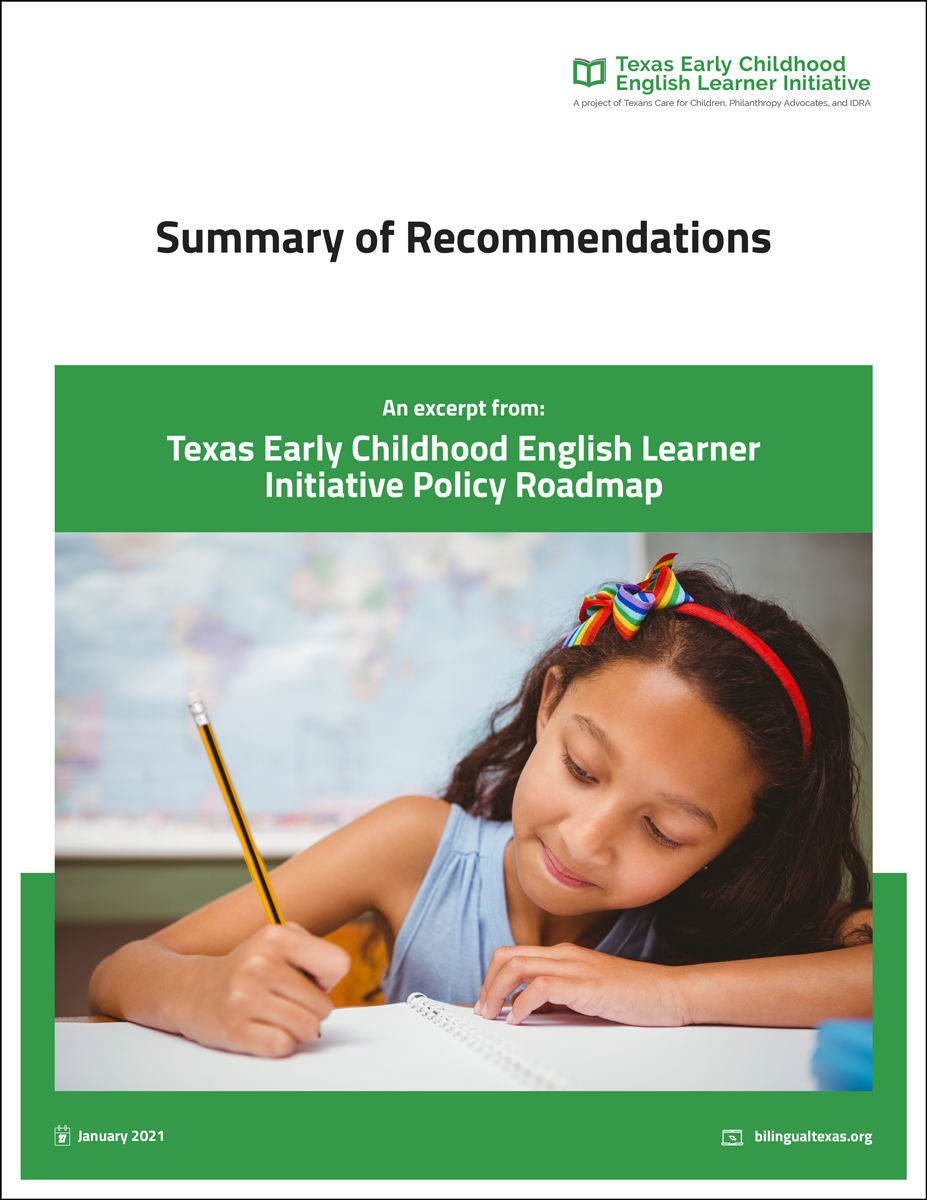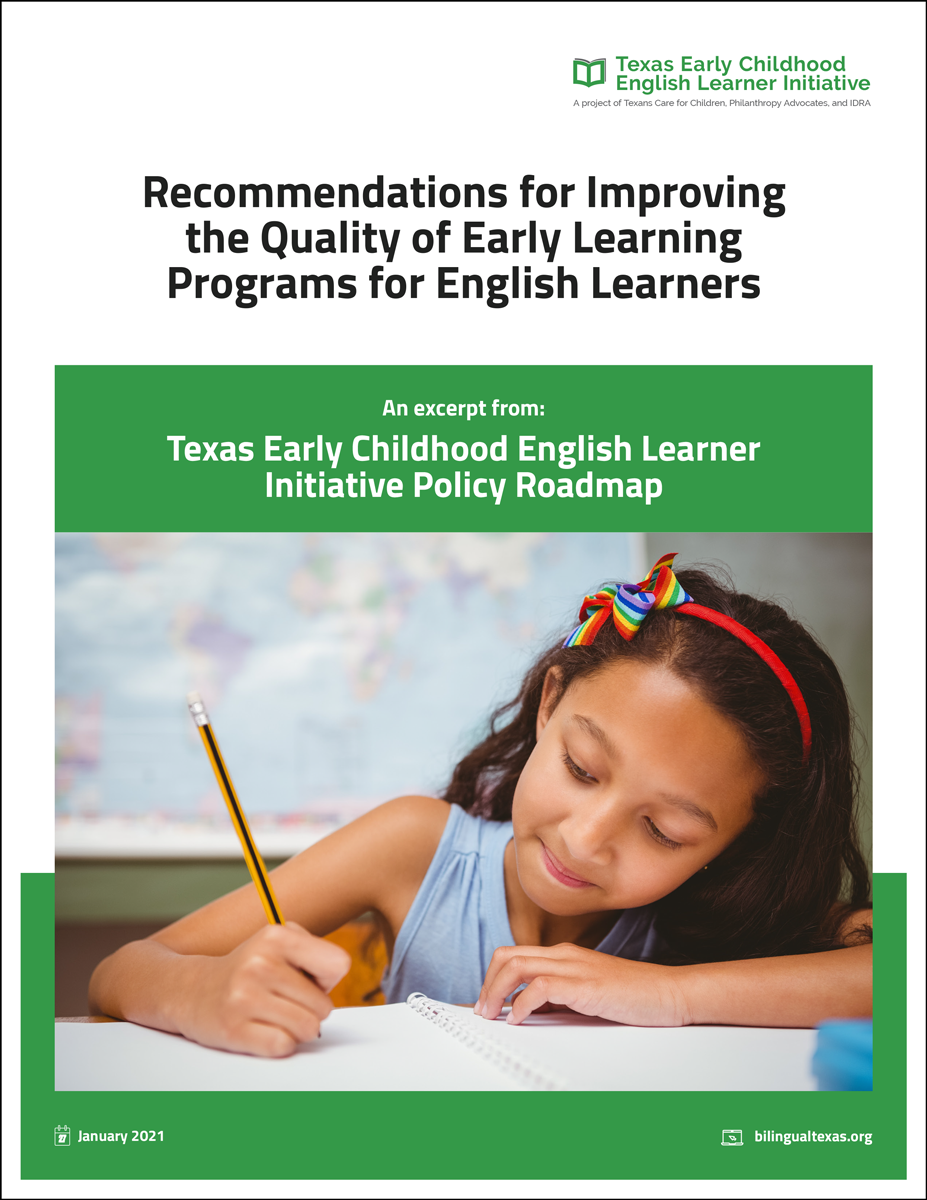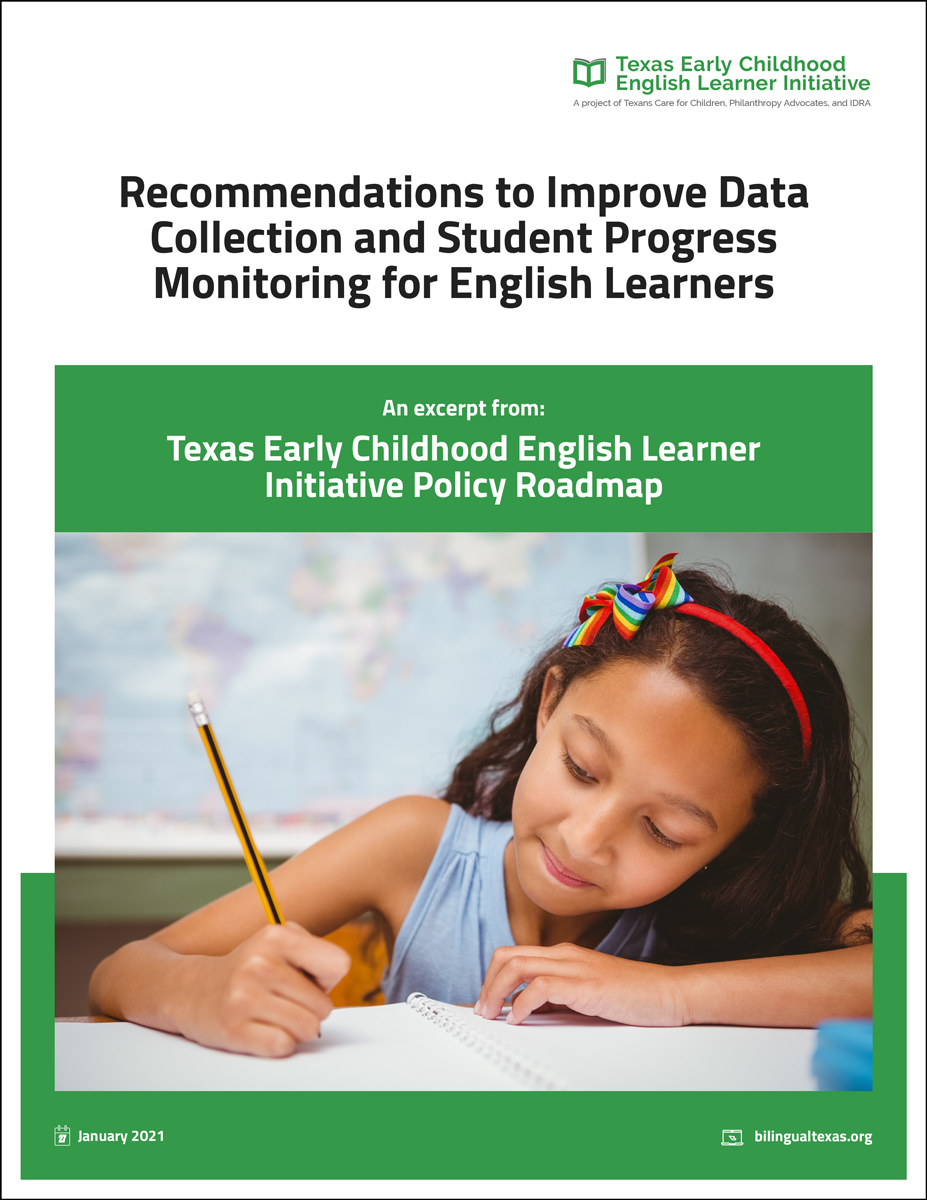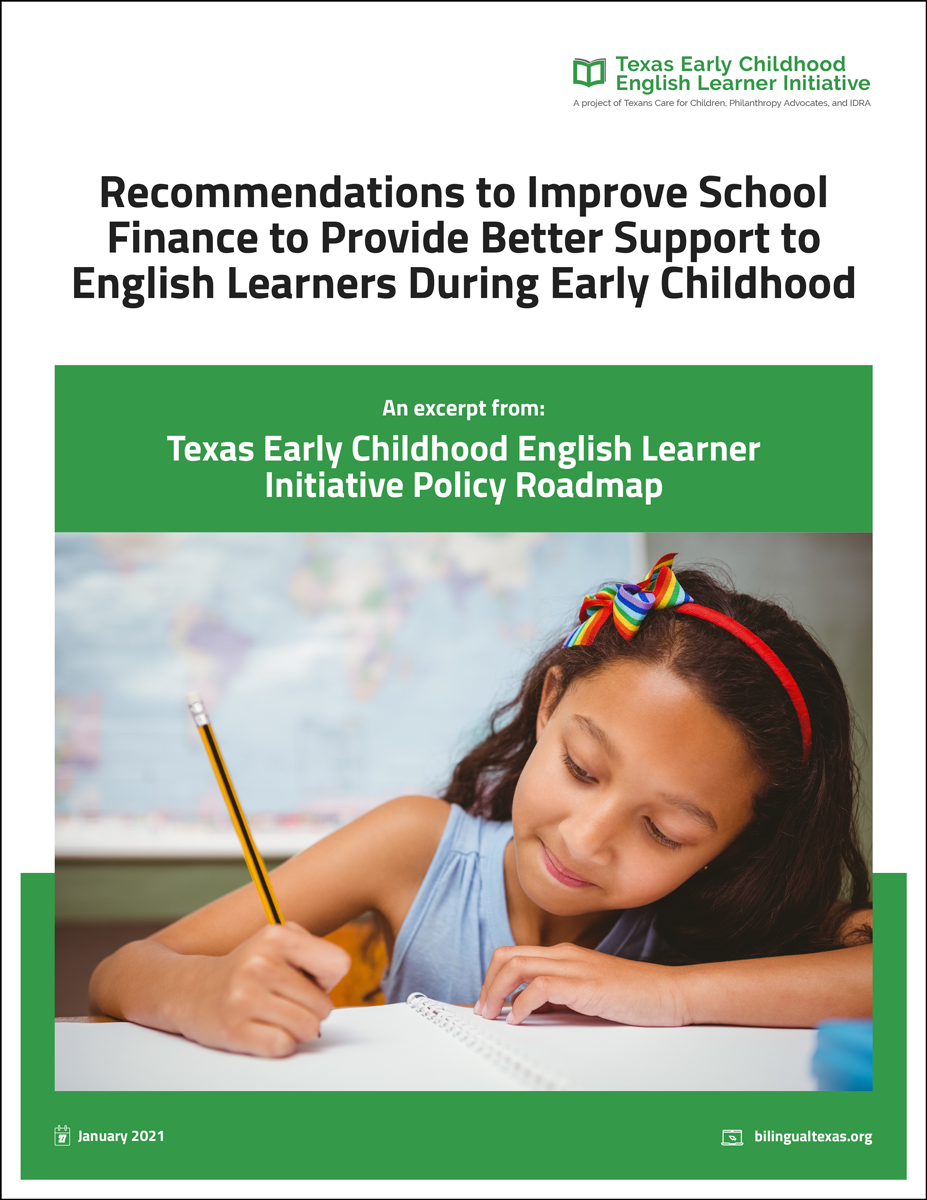The Policy Roadmap
The report provides recommendations to the Texas Legislature, state agencies, school districts, charter schools, and child care centers to improve educational outcomes for early childhood English Learners (ELs).
The recommendations focus on four key areas for pre-k, other early grades, and child care: improving the quality of early learning programs, strengthening the workforce, collecting better data, and retooling school finance.
Summary of Recommendations
Here's a summary of our recommendations to the Legislature, state agencies (including TEA, HHSC, TWC, and THECB), and the community (including school districts, charter schools, and child care programs).
-
• Create a state strategic plan to cultivate bilingualism across all early learning systems and set clear benchmarks to increase the number of bilingually certified teachers, the number of students who are bilingual or multilingual, and the availability of high-quality dual language immersion classes in pre-k through 12th grade.
• Update high-quality prekindergarten standards to include a maximum class size of 22 students and a student - teacher ratio of no more than 11:1.
• Create a state broadband and technology plan that serves the needs of young English Learners.
• As Texas policymakers update Texas pre-k standards, consider the examples provided in the Head Start Early Learning Outcomes Framework.
• Create a certification in Bilingual Special Education.
• Reduce programmatic barriers for educators and pre-service teachers to access bilingual education certification programs.
• Provide greater support for bilingual certified educators, including additional loan repayment assistance.
• Improve Early Childhood-Grade 3 and Early Childhood-Grade 6 teacher certification programs to include more culturally responsive content on educating EL children.
• Starting in child care and continuing through high school, adopt a uniform process across early childhood systems to identify English Learner children and collect these data.
• Ensure the Early Education Allotment from HB 3 (2019) supports children in pre-k, including young ELs.
• Protect and increase state financial support for bilingual education and ESL programs in schools through per-pupil funding.
• Include a factor to adjust for inflation in the basic allotment so that increased weighted allotments reflect current educational costs.
-
• Provide stronger curricular guidance to schools and child care programs regarding ELs’ education needs.
• Monitor implementation of Dual Language Immersion (DLI) and Transitional Bilingual programming at the campus and district level, including disparities in English Learner vs. non-English Learner enrollment.
• Prioritize family engagement.
• Launch a statewide campaign to educate school district leaders, local workforce development boards, and families about the importance of bilingualism.
• Incorporate criteria relevant to English Learner children in the Texas child care quality rating and improvement system, Texas Rising Star (TRS).
• Add information about services for English Learner children in child care searchable databases.
• Provide culturally and linguistically responsive training for educators, administrators, and coaches.
• Replace the term English Learner with Emergent Bilingual in the state’s public education data system.
• Continue to identify English Learners in the state’s education database (PEIMS) after they exit a bilingual education or ESL program.
• Track longitudinal progress of EL children through high school by bilingual education program models.
• Assess EL children bilingually on kindergarten readiness assessments (KRAs).
• Collect and report data on how many students are receiving a Seal of Biliteracy designation at graduation.
• Contract for an independent study to determine costs for administering quality bilingual education and ESL programs.
• Provide more oversight and assistance to districts to utilize the Dual Language Allotment and properly implement Dual Language Immersion programs.
-
• Recognize bilingualism and biliteracy as strengths and implement research-based teaching practices that support their development.
• Engage families of ELs as collaborative partners in their children’s education.
• Utilize culturally responsive and developmentally appropriate procedures to screen ELs’ language proficiency in both English and their home language.
• Honor and celebrate children’s home cultures and languages throughout instruction.
• Invest in and expand Dual Language Immersion (DLI) programs and ensure the model is equitably placed in campuses across districts.
• Work to recruit, hire, retain, and promote bilingual and multilingual staff who speak and understand the culture of the population served.
• Seek grants from the Texas Education Agency Grow-Your-Own teacher program to develop local teacher preparation pathways.
• Institute student progress monitoring that goes beyond measuring English proficiency.
• Prioritize young ELs in district allotment spending.
“By tracking (EL) student achievement throughout their academic career, administrators may be able to identify and correct gaps that may be widening due to language issues."
— A Dual Language teacher from the Houston area
Full Recommendations for Each Area
Jump to excerpts of the Policy Roadmap with full recommendations and analysis for each of the four areas covered in the report: improving the quality of early learning programs, strengthening the workforce, collecting better data, and retooling school finance.






